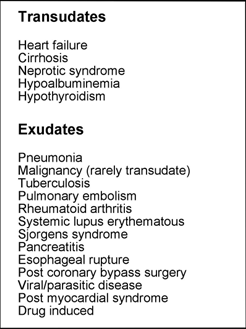
Pleural Fluid Composition. The fluid enters the pleural space from systemic capillaries in the parietal pleurae and exits via parietal pleural stomas and lymphatics. Expressed per kilogram of body mass total pleural fluid volume in normal nonsmoking humans is 0 26 0 1 ml kg. The outer pleura is attached to the chest wall but is separated from it by the endothoracic fascia. Normally 10 to 20 ml of pleural fluid similar in composition to plasma but lower in protein 1 5 g dl 15 g l is spread thinly over visceral and parietal pleurae facilitating movement between the lungs and chest wall.

The pleural cavity also known as the pleural space is the thin fluid filled space between the two pulmonary pleurae of each lung. Expressed per kilogram of body mass total pleural fluid volume in normal nonsmoking humans is 0 26 0 1 ml kg. Total cell count in the pl fluid of nonsmoking normal subjects yielded a median of 91 103white blood cells wbc per milliliter of lavage fluid interquartile range ir 124 103cells ml. Pleural fluid fills this cavity. The pleural cavity can be viewed as a potential space beca. The inner pleura covers the lungs and adjoining structures including blood vessels bronchi and nerves.
The outer pleura is attached to the chest wall but is separated from it by the endothoracic fascia.
Total cell count in the pl fluid of nonsmoking normal subjects yielded a median of 91 103white blood cells wbc per milliliter of lavage fluid interquartile range ir 124 103cells ml. There are two layers of pleural membranes outer parietal and inner visceral. Total cell count in the pl fluid of nonsmoking normal subjects yielded a median of 91 103white blood cells wbc per milliliter of lavage fluid interquartile range ir 124 103cells ml. The pleural cavity can be viewed as a potential space beca. A pleura is a serous membrane which folds back onto itself to form a two layered membranous pleural sac. Expressed per kilogram of body mass total pleural fluid volume in normal nonsmoking humans is 0 26 0 1 ml kg.